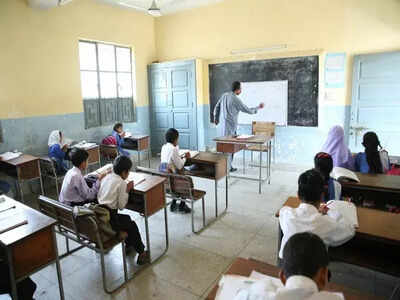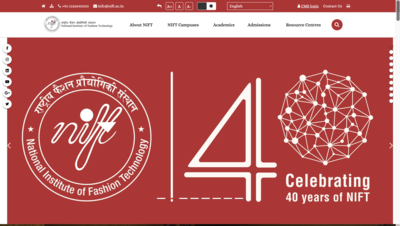India is winning the wrong race. Literacy is creeping upward—from 64.8% in 2001 to 74% in 2011, and touching roughly 80.9% in 2023–24, according to the Periodic Labour Force Survey (PLFS)—yet the country’s classrooms are haemorrhaging teachers at a rate that could turn this statistical victory into an educational farce. The National Education Policy (NEP) 2020 prescribes a pupil–teacher ratio of 30:1 (25:1 in disadvantaged areas). In reality, ratios in many states are drifting well beyond 40:1, as per state education department data and Ministry of Education figures (2025). The paradox is exquisite in its absurdity: A nation boasting rising literacy while dismantling, brick by brick, the very workforce that makes literacy possible.
Bihar: Literacy up, staff down
Bihar’s literacy rate has risen from 63.8% in 2011 (Census) to about 74.3% in 2023–24 (PLFS). But in August 2025, the Bihar Additional Chief Secretary disclosed numbers that would make even the most hardened bureaucrat wince: 29 schools have no teachers at all, 354 schools make do with one, and 2,977 schools scrape by with two. Even more damning, 14,213 schools exceed the 40:1 pupil–teacher ratio—flouting NEP’s ideals by a comfortable margin. In Bihar, literacy appears to have climbed a ladder that is now being kicked away.
Punjab and the premier school illusion
In Punjab, the teacher deficit is no longer just a rural or government-school malaise—it infects the country’s most vaunted school chains. As of June 2025, the Ministry of Education reported to MP Ranjeet Ranjan in Rajya Sabha that 401 posts were vacant, including 155 teaching positions in Kendriya Vidyalayas (KVs) and 86 in Jawahar Navodaya Vidyalayas (JNVs). Nationwide, KVs face 9,382 vacancies (7,765 teaching) and JNVs 7,379 vacancies (4,323 teaching). That’s 16,761 personnel missing from two systems meant to symbolise educational excellence. Prestige, it seems, is no match for payroll paralysis.
Karnataka: Hiring today, retiring tomorrow
Karnataka enjoys a literacy rate of 82.7% (PLFS 2023–24), but its teacher pipeline has all the sturdiness of a leaky tap. Estimates suggest that there are 55,000 vacancies in government primary and high schools, with 36,000 retirements due by April 2026. A hurried appointment of 44,000 guest and contractual teachers is less a solution and more a stopgap—think sticking a Band-Aid on a cracked dam.
Jharkhand, Haryana, Rajasthan: The many faces of neglect
In Jharkhand, recruitment irregularities block qualified candidates, worsening shortages. Haryana has resorted to making Hindi teachers teach English, while science lessons are streamed via YouTube—digital convenience masking human absence. Rajasthan’s grand upgrade of upper primary schools to senior secondary level was never matched with adequate staffing, leaving over 125,000 vacancies unfilled, suggest estimates.
The global echo with an Indian accent
Teacher shortages are a global refrain—America’s public schools, Japan’s classrooms, Britain’s academies all sing the same lament of burnout and attrition. But India’s version has a particularly perverse harmony: A steadily rising literacy curve alongside a steadily shrinking corps of teachers. Over two decades, literacy rates have climbed almost everywhere—Kerala at 96.2% (PLFS 2023–24), Himachal Pradesh at 88.2%, and even Uttar Pradesh, long an educational laggard, improving from 57.2% in 2001 (Census) to around 73% in 2023–24 (PLFS). The surface is glossy; the scaffolding underneath is rotting.
Why are India’s classrooms empty of teachers?
The teacher shortage in India is not an accident of poor planning; it is the outcome of a long romance with neglect. In states like Uttar Pradesh, Bihar, and Maharashtra, sanctioned teaching posts gather dust for years, entangled in exam backlogs, court cases, and the kind of administrative lethargy that survives governments. Recruitment cycles stretch so long that by the time a candidate is appointed, another retires, ensuring the vacancy column remains stubbornly full.Budgets offer no rescue. In the face of fiscal strain, teacher recruitment is the first casualty. States make do with “guest” or “contractual” teachers — a polite euphemism for cheaper, temporary staff who often leave before they can learn the students’ names.Once a profession of stability and respect, teaching is now a career many graduates avoid. Stagnant salaries, delayed payments, and the absence of a career ladder have eroded its appeal. Rural postings make the deal even less attractive: poor housing, minimal facilities, and the unspoken truth that few in policymaking circles have set foot in such schools in decades.Even where infrastructure improves, human capital does not follow. Rajasthan’s decision to upgrade hundreds of upper primary schools to senior secondary status was ambitious in theory, but in practice, the buildings stand ready while the teachers remain missing. Blackboards were painted; the chalk never came. The shortage is particularly acute in STEM subjects. Haryana’s Hindi teachers doubling up as English teachers, while science is “taught” through YouTube videos, is not an oddity — it is the system.
Explained: The paradox of rising literacy and vanishing teachers
As already mentioned, India’s literacy level has a rising curve. How does a country with shrinking classrooms produce bigger numbers? The answer lies partly in definitions, partly in momentum. To be counted as literate in official surveys, one only needs to read and write “with understanding” in any language — a low bar that inflates the figures even if comprehension is weak.There is also the afterglow of past investment. The recruitment drives, mid-day meal schemes, and universal enrolment campaigns of the 2000s and early 2010s created a cohort whose literacy now shows up in adult statistics, even if today’s classrooms are threadbare. Meanwhile, non-school channels fill the void: Private tuition, NGO-led centres, community classes, and in urban areas, smartphones loaded with learning apps. Parents, even in low-income households, now view basic literacy as a survival skill, ensuring children acquire at least the minimum.And literacy, unlike school attendance, is cumulative. Once you are counted as literate, you remain so in the data. This statistical momentum hides the cracks — for now. Beneath the rising curve lies the risk of ‘functional illiteracy’: The ability to sign one’s name but not read a bank form, to recognise letters but not grasp meaning.
The looming danger
The danger is that the numbers will hold steady until they suddenly don’t. A generation taught by overburdened, underqualified, or absent teachers will eventually drag the literacy curve down, not because the state suddenly failed, but because it has been failing for years in slow motion. India must decide whether it wants literacy to remain a living skill or settle for it as a hollow number in a government press release.TOI Education is on WhatsApp now. Follow us here.






